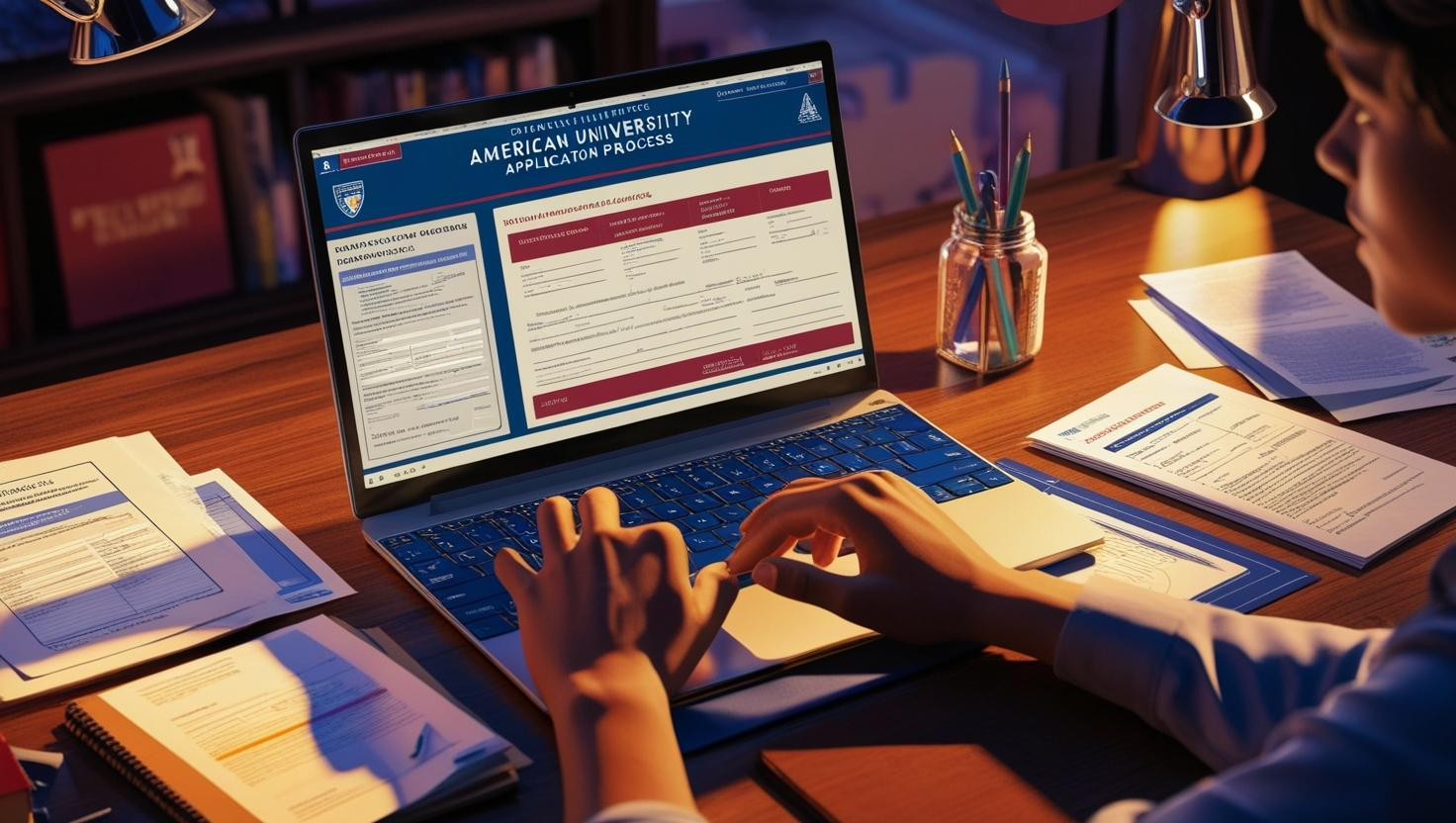Welcome to your go-to resource for studying in the United States. This guide is here to help international students navigate the journey of study abroad in america. We cover everything from choosing schools to post-graduation plans.
Studying in the United States offers chances for academic growth and global networking. But for international students in usa, it can feel overwhelming. This guide breaks it down into clear, manageable steps.
Discover how to pick the right university, prepare for visas, and build a support network. Whether you’re aiming for Ivy League schools or community colleges, we provide actionable advice tailored to your goals.
Key Takeaways
- Learn strategies to succeed as international students in usa.
- Understand visa requirements and academic systems unique to studying in the united states.
- Explore financial planning tips and career paths after study abroad in america.
- Get advice on adapting to classroom norms and campus life.
- Access step-by-step guidance from applications to graduation.
Why Choose Studying in the United States for Your Education
Deciding where to study is a big choice. The higher education in the united states has many benefits. It offers top schools and global chances, making American universities popular worldwide.
World-Class Academic Institutions and Programs
Top American universities like Stanford and MIT are leaders in innovation. They have advanced research labs, partnerships with industries, and degrees in new fields. Students learn from top experts, keeping education current.
Diverse Cultural Experiences and Networking Opportunities
“At my university, I met peers from 120 countries. This shaped my perspective more than any textbook.”
US education values diversity. Campuses are filled with students and teachers from all over. Joining clubs or cultural events helps build lasting connections.

Career Advancement and Global Recognition
- A degree from American universities is known worldwide.
- Internships with big names like Google or Tesla are common through US education.
- Graduates get skills that open doors in any country.
Studying in the US is more than classes. It's a start to a career that connects the world.
Navigating the American University Application Process
Applying to american universities needs careful planning. Start 12–18 months before you want to start. This helps you stay on track with the university admissions process in the usa. Here's a simple guide to help you on your path to higher education in the united states:

Prepare standardized tests: Sign up early for SAT, ACT, GRE, or GMAT. If English isn't your first language, you'll need TOEFL or IELTS scores.
Build your application: Write a strong personal statement, get recommendation letters, and prepare your academic records.
Choose application platforms: Use the Common App for many schools or apply directly to each one.
Submit required documents: Show you can pay for school with bank statements or sponsorship letters.
| Common App | Individual Applications |
|---|---|
| One platform for over 900 american universities | Forms tailored for each school |
| Great for applying to many schools at once | May need special essays or supplements |
Application fees differ, but financial aid can help. Keep track of deadlines and ask for letters of recommendation early. Emphasize your leadership, activities, and grades to shine. Being persistent and organized can turn obstacles into chances for success.
Understanding Different Types of US Educational Institutions
American universities are key to the US education system. They offer many academic programs to fit every student's needs. You can find both top-notch schools and affordable options.
Ivy League Universities vs State Universities
Ivy league schools like Harvard or Yale are known for attracting the best students. However, they can be expensive. State universities, like University of Michigan or UC Berkeley, offer great programs at lower costs for local students.
Both types of schools have strong academic programs in us colleges. But, getting in is harder at ivy league schools.
- Ivy League: Elite reputation, competitive admissions, global networks
- State Universities: Broader access, research opportunities, diverse student bodies
Community Colleges and Transfer Opportunities
Community colleges, like Los Angeles City College or Maricopa County, are great for starting your education. They let you earn associate degrees or transfer to four-year schools. This 2+2 transfer path is a smart way to save money.
Specialized Schools and Technical Institutes
Schools like Rhode Island School of Design (art) or MIT (engineering) focus on specific areas. They work with employers to offer training in tech, arts, or healthcare. These schools are perfect for students aiming for a career in a specific field.
Choosing the right school depends on your budget, career goals, and learning style. The US education system has many options. Whether you want prestige, affordability, or specialized training, there's a path for you.
Securing Your Student Visa: Requirements and Application Tips
Getting a students' visa for america is key for international students in usa. This guide will help you prepare with confidence.
F-1 Visa Requirements and Documentation
First, collect important documents like your I-20 form, proof of money, and the DS-160 confirmation page. Don't forget to pay the SEVIS fee and book your visa interview. Missing documents or incomplete forms can cause delays. Always check the U.S. Department of State’s website for updates.
- I-20 form from your U.S. institution
- Financial statements showing sufficient funds
- Completed DS-160 form and receipt
- SEVIS payment confirmation
Preparing for Your Visa Interview
“Be ready to explain your study goals and ties to your home country,” advises USCIS officials. “Demonstrate strong English communication skills and clear plans after graduation.”
Wear professional clothes and practice answers to common questions. These might include:
Why choose this program?
How will you fund your education?
Do you plan to return home after studying?
Maintaining Valid Status During Your Stay
To keep your studying in the united states journey on track, follow these tips:
- Enroll full-time each semester
- Report address changes to your Designated School Official (DSO)
- Avoid unauthorized work; check on-campus job options first
- Notify your DSO if you transfer schools or extend your program
Financial Planning for International Students in America
Managing your money is crucial when studying in the united states. International students in usa have to deal with many expenses. This guide will help you understand budgets, funding, and how to save money.
First, figure out how much you'll need. Tuition costs differ a lot between public and private schools in higher education in the united states. Here's a quick comparison:
| Type | Public Universities | Private Universities |
|---|---|---|
| Annual Tuition | Annual Tuition | $50,000–$70,000 |
| Housing | $10,000–$15,000 | $12,000–$20,000 |
| Total Yearly Cost | $30,000–$55,000 | $62,000–$90,000 |
Look into funding options:
- Institutional scholarships (check university websites)
- Private grants like Fulbright or Rotary Scholarships
- Family support and home-country loans
Here are some practical tips for managing your money:
Open a U.S. bank account for easier transactions.
Use apps like Mint to budget monthly.
Work on-campus (up to 20 hours/week) if allowed by visa rules.
Keep track of your tax obligations with IRS guidelines.
“Budgeting is a skill that grows with practice.”
Being proactive with your finances can make a big difference. Research, save wisely, and look into all funding options for your time in higher education in the united states.
Adapting to the American Academic System
Thriving in us education means understanding its unique structure. From picking courses to using campus resources, here’s how to succeed in academic programs in us colleges during your study abroad in america journey.
Understanding GPA, Credits, and Course Selection
Grades in us education are based on GPA, using credit hours per course. A 3-credit class meets more often than a 1-credit lab. It's important to choose courses carefully:
- General education courses build broad knowledge.
- Majors and minors define your focus areas.
- Electives let you explore new subjects.
Classroom Culture and Professor Relationships
Classrooms in academic programs in us colleges value participation. Here’s how to engage:
- Speak up in discussions—even if you’re unsure.
- Attend office hours to ask questions.
- Use email for quick clarifications, not emergencies.
“Professors expect students to take initiative.”
Academic Resources and Support Services
Colleges offer free help for every challenge. Take advantage of:
- Writing centers for essay reviews.
- Tutoring for STEM or language courses.
- Disability services for accessibility needs.
Remember: Asking for help shows you’re proactive—not weak. Academic advisors can guide you through registration and major choices.
Finding Housing and Transportation as an International Student
For international students in usa, finding a place to live and getting around are crucial. Look into on-campus housing like dorms or apartments. They offer safety and chances to meet new people. Off-campus rentals or homestays give a different vibe but need careful checks.
- On-campus housing: Often includes meal plans and 24/7 security.
- Off-campus rentals: Search local platforms like Craigslist or university listings. Verify lease terms and deposit requirements.
- Homestays: Great for language practice but may involve stricter rules.
Transport options vary by location. In big cities like New York, public transit and Uber are key. But in rural areas, you might need a car. Many schools offer shuttle services to campus spots.
“Joining a housing group chat helped me find a shared apartment near campus!” – Maria, a graduate student from Brazil
Major cities have lots of public transit, while small towns need cars. Plan for airport pickup or book shuttles in advance. Budget for gas, insurance, and parking if you drive. Universities often host housing fairs before you arrive—don't miss these.
Studying in the united states means balancing costs and comfort. Focus on safety, location, and community support to make your transition smoother.
Cultural Adjustment and Building Your Social Network
Studying in the U.S. is exciting and challenging. For international students in usa, getting used to new social norms and daily life is crucial. This section offers tips on making friends while staying connected to your culture.
Overcoming Culture Shock
Adjusting to american universities can be a journey. You might feel excited, confused, or frustrated. Here are some steps to help:
- Keep a journal to track your feelings and progress
- Stay in touch with family through weekly calls
- Look for campus support groups for advice
"My first month felt lonely, but joining a cooking club helped me meet others who loved food as much as I did." – Maria, Brazil
Getting Involved in Campus Activities
Getting involved in campus life makes your study abroad in america experience richer. Try these:
Join 2-3 clubs that match your interests
Volunteer at community events
Go to campus cultural festivals
Activities like debate teams or art groups can improve your skills. Employers value teamwork and leadership.
Connecting with International Student Organizations
Many american universities have groups like International Student Associations (ISAs) or NAFSA chapters. They offer:
- Language exchange programs
- Cultural heritage events
- Workshops on U.S. social customs
These networks help you understand differences like direct communication styles found in american universities.
Working While Studying in the United States: Rules and Opportunities
Many international students in usa look for part-time jobs to help with their studying in the united states. Knowing the rules helps them stay in line with their visa. Here are the main opportunities and guidelines:
On-Campus Employment Options
Jobs on campus are easy to get for students' visa for america holders. You can work as a library assistant, in the dining hall, as a research assistant, or in IT. These jobs usually pay between minimum wage and $15 an hour. Tip: Look for jobs on campus early and make sure they fit your school schedule.
- Libraries: Research assistants or desk staff
- Residential Life: Dorm advisors or maintenance roles
- Administrative Offices: Data entry or event coordination
OPT, CPT, and Internship Opportunities
Optional Practical Training (OPT) and Curricular Practical Training (CPT) let you work in your field. OPT is for after graduation (12 months, with STEM extensions), and CPT is during your studies. Both need an employer who uses E-Verify. Find internships through your school's career center or industry connections.
“Internships boost resumes and often lead to post-graduation job offers,” says a career advisor at MIT.
Understanding Work Restrictions
Here are some important rules to remember:
On-campus work: Unlimited hours during breaks, 20/hour max during terms
Off-campus jobs: Only allowed with specific visa permissions (e.g., STEM OPT)
Working without permission can risk losing your visa
Always tell your DSO (Designated School Official) about any job changes. Keep up with the latest from USCIS.
Post-Graduation Options for International Students
Finishing a degree in the U.S. opens many doors. Many students work in the U.S. with an Optional Practical Training (OPT) visa. This visa lets them work for 12 months after graduation. STEM fields get an extra 24 months.
Others might want to keep studying. This means they can get a higher degree in the U.S.
"Early planning with advisors ensures smoother transitions. Start exploring options six months before graduation." – Career Services, MIT
- Work Authorization: OPT starts 60 days after graduation. STEM extensions require employer sponsorship.
- H-1B Visa: Employers may sponsor this work visa, though lottery competition is fierce. Track application deadlines closely.
- Green Card Path: Long-term residency options exist via employer petitions or extraordinary ability categories.
Thinking of going back home? Degrees from the U.S. can really help your career worldwide. Alumni networks and LinkedIn can keep you connected to the U.S. Here are some tips:
Attend career fairs hosted by universities.
Update visa documents promptly—expired students' visa for america statuses require immediate attention.
Research home-country job markets using resources like NAFSA.
Every graduate's journey is different. Stay active, talk to campus advisors, and use the skills you gained in the U.S. to make a great next move.
Conclusion: Making the Most of Your American Educational Journey
Studying abroad in America is more than just getting a degree. It's a chance to grow and learn. From picking the right college to dealing with visa rules, each step is important. The US education system focuses on hands-on learning and global views, making your degree valuable everywhere.
Don't forget to use campus resources like career centers and cultural events. Get involved with clubs and explore new places. Many alumni wish they'd taken more chances, like internships or traveling. Stay active by attending office hours, networking, and applying for work options.
Every challenge you face is a lesson. Students have turned research into startups or language barriers into fluency. Their stories show how US education turns dreams into reality. Start by checking visa deadlines, budgeting, and looking at course catalogs. Your journey is about gaining skills that employers worldwide value.
Whether you aim for top schools or community colleges, each path offers growth. Embrace every step, from applying to celebrating graduation. The US education system is here to empower you. Start today by exploring programs, talking to advisors, and boldly stepping into your future.

